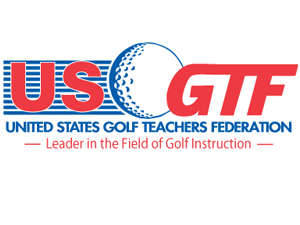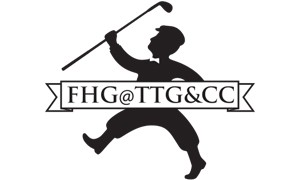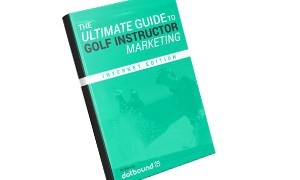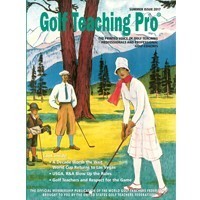Blog
Book Review – Gary Player’s Black Book
USGTF Class Schedule
Florida Hickory Golfers Invite USGTF Members
Free E-Book Available to USGTF Members
US, World Cup Reminder and Hotel Info
SW Regional Title to Johanson, Others on Tap
Summer Magazine Coming Soon
Recalling Long Jim,The First PGA Champion
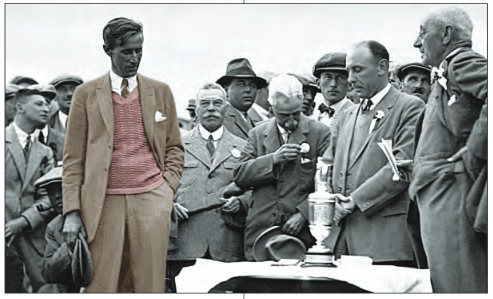 By Mike Stevens USGTF Certified Golf Teaching Professional® Tampa, Florida
By Mike Stevens USGTF Certified Golf Teaching Professional® Tampa, Florida
One hundred years ago, the PGA Championship was inaugurated at Siwonoy Country Club in Bronxville, New York. Thirty-two players qualified for the tournament at sites around the country. One qualifier, Jack Pirie, failed to arrive, so a blind draw was set up, allowing one player to get a first-round bye.
The PGA Championship began as a match-play tournament. It wasn’t until 1958 that it became a stroke-play event. It was quite grueling, requiring 36-hole matches over a five-day period. Jim Barnes, a native of England, defeated Jock Hutchinson on the 36th hole to win the title.
Barnes, known as Long Jim because of his long, booming tee shots, was born in Cornwall, England, on March 8, 1886. Jim was also a very tall six-foot-three, which probably accounted for his length off the tee. He started in golf, as many professionals of the time did, as a caddie. Apparently he was very good, and eventually became an apprentice to professional Fred Whiting at the West Cornwall Golf Club. Like many of the Scottish and English professionals, the expanding golf scene in America resulted in several emigrating to the former colony. Barnes accepted an offer from the Claremont Golf Club in San Francisco in 1906. He remained there for two years before he was lured away to a course in Canada.
During these early years in America, Barnes showed his skill as a player, winning several Northwest Opens. In 1912, he entered his first U.S. Open, coming in 18th. The next year, he came in fourth in the Open won by Francis Quimet that put American golfers on the map as players to be reckoned with. Barnes’ popularity began to grow, and he became sought after by several clubs in 1914. He settled at Whitemarsh Country Club in Philadelphia, Pennsylvania.
During the winter months, he toured with Walter Hagen, playing several exhibitions and challenge matches. By 1916, Jim was coming into his own. He won the North and South Open at Pinehurst and the New York Newspaper Open.
He then qualified for the U.S. Open, where he finished third, and then won the Connecticut Open, following that up by easily qualifying for the first PGA Championship sponsored by Rodman Wanamaker, a department store magnate for whom the PGA Championship trophy is named. In the final match, as both players (Barnes and Hutchinson) surveyed their putts, there occurred a dispute over who was away. Hutchinson argued that Barnes should putt first, but Jim disagreed. The match referee was called in to resolve the situation, and after a measurement, Hutchinson was deemed to be first to putt. He missed and Barnes made his for the win.
Barnes moved to different clubs, up north in the summer and in Florida in the winter, while continuing to play some great golf. He would go on to win four major championships: two PGAs, a U.S. Open and the Open Championships, from 1916 to 1925. Jim became the pro at Temple Terrace Golf & Country Club in 1923 and hosted the Florida Open in 1925, which had a sizable purse at the time of $5,000. More than 100 pros from around the country participated in the event won by Leo Diegel. The tournament is commemorated today as the United States Professional Hickory Golf Championship, sponsored by the United States Golf Teachers Federation, and played each February, as was the original event.
Jim Barnes was considered to be a true gentleman golfer. He continued to serve as professional at various clubs in America until 1955, his last stop at North Hempstead CC on Long Island, New York. He was inducted into the PGA Professional Hall of Fame in 1940. He lived to be 80 years old, dying of a heart attack in 1966. He was greatly respected by his peers throughout the professional world.
* Thanks to Peter Gompertz, whose article in Through the Green magazine provided background information on Barnes’ career.
Golf Teachers VS. Golf Coaches: Differences And Similarities
Sean Foley said on the Charlie Rose’s PBS show, “I teach kids and I coach adults.” Another difference was said to be that teachers teach basics while coaches teach more advanced concepts. Still another claimed that teaching was refining technique while coaching was in how to use the techniques. All are plausible, but miss the mark.
Think of our traditional team sports such as football, basketball and hockey. The leader of the team is not the “head teacher.” No, he’s called the “head coach.” Baseball has a manager leading the team, but even that sport refers to all the other coaches on the team as, well, coaches. So why do these sports refer to them as coaches?
The answer is simple. The element of competition separates a teacher from a coach in a sport. One who is strictly a golf teacher is not imparting the elements of competing to their students. Rather, they are mainly focusing on helping the students improve their technique.
Are there some similarities between a teacher and a coach? Sure. Let’s list a few.
TEACHING. A teacher obviously teaches, but so does a coach. A golf coach has to know how to be able to fix swing problems and impart technical instruction. Like a teacher, a coach has to know the rules and etiquette of the game, and be able to teach them to their players.
MOTIVATING. Both teachers and coaches have to be good at motivating in order to get the best out of those they teach and coach. There are times when a golfer, whether or not they compete, doesn’t want to give the effort necessary to improve. Teachers and coaches have to know some motivational techniques in order to help these players.
POSITIVE ATTITUDE. One of the USGTF’s long-standing credos for teachers is to always carry a positive attitude when teaching. The same applies to coaches. Coaching that provides for a negative atmosphere leads to players who don’t want to put in the work necessary or the effort to improve or win. This is closely related to motivating skills.
KNOWLEDGE. Some high school golf coaches are given the job either because no one else wants it, or because they want to make some extra money on the side. They may not know the first thing about golf technique. Such “coaches” unfortunately exist, but it’s not necessarily their fault. A good teacher and a good coach have the knowledge base needed in order to be effective.
Those are some of the similarities. Here’s a look at some of the differences.
COMPETITION. This, of course, is the biggest difference. Coaches prepare players for team or individual competition while teachers, again, are mainly involved in teaching and refining technique. Once a teacher starts preparing a player for com-petition, that teacher is now also a coach. Coaches need to know the physical, mental, and emotional aspects of competition in order to get their players to perform as optimally as they can. They need to be familiar with the strategic aspects of the game, and the differences in competing at stroke play and match play.
TECHNOLOGY. A coach generally needs to make wider use of technology than does a teacher. For example, TrackMan and Flight Scope are launch monitors used by many clubfitters, but also competitive golfers seek out these devices so they can truly know exactly what they’re doing in terms of ball flight and club action through impact. While these devices are not necessary in order to be a great coach, they certainly help players in performing their best. Teachers may have some training aids available and even use advanced technology, but overall they’re drifting into the coaching realm when they do so.
PLAYING EXPERIENCE. A coach needs to have been in the competitive arena himself or herself in order to be an effective coach. There are certain things only a competitive player would know, such as how pressure affects the swing, how to fix a swing or create a go-to shot when things go wrong, or how to manage the emotional aspects of competing and how they play a part in performance. A golf teacher who never competed or rarely did so is at a disadvantage if they want to switch over to the coaching realm. That’s not to say they can’t do it, but there are a number of things they will need to learn if they want to become a good coach. The WGCA provides plenty of instruction in these departments in order to aid teachers of all abilities become great coaches.
Teaching and coaching are similar and yet they are different, as we’ve seen here. Resources from the USGTF can help teachers and coaches of all abilities in both endeavors. For more information on these resources, please contact USGTF Member Services.



